![]()
From my earlier piece:
However, Nokia (and then Microsoft, taking on the existing in-production designs when it bought Nokia up) went a different way, with the Lumia 930, 1520 and then 950 and 950 XL all going for 'only' 20MP and a much reduced PureView oversampling ratio, down to 8MP for its output. The main benefit was speed, of course, with not only shot to shot times of less than a second but also the possibility of genuine multi-shot HDR (bracketing, something which we'd been seeing on the iPhone 4S first in the phone world), though with the digital processing (combining exposures) pushed into the background while the user got on with something else on the phone.
For the Google Pixel, rather than taking one huge shot and then (PureView) downsampling to reduce noise and improve purity (as on the 808/1020), computing power in a smartphone has now got so prodigious (in the Pixel's case, a Snapdragon 821 chipset with 4GB RAM) that it's possible to take several RAW photos (as needed) rather than one every time you press the shutter control, and do all manner of clever things to these huge 20MB un-encoded image files - auto-aligning, reducing noise, enhancing colours, white balancing, and more - spitting out and saving a 'purer' JPG-encoded image, all within one second (and in the background, so things are instantaneous for the user and the UI).
...I contend that you can think of Pixel-style 'computational photography' as the 2016 form of PureView. The idea's similar - using information from many sources to reduce random digital noise and improve dynamic range. Except that the sources in this case are from multiple frames (we don't know how many Google's proprietary HDR+ software demands, it probably varies according to conditions) rather than scattered parts of one shot from a higher resolution sensor. But the image data's real and it's RAW and is eminently suited for working with, away from the world of JPG compression artefacts.
Whichever end of my curve/chart a smartphone camera works in, the end result should be similar in terms of image quality, i.e. what the user gets to see. Google calls the system in the Pixel range 'HDR+', but if Nokia had arrived at this point, in a parallel universe, it could equally well have been named 'PureView II'.
Now, things have moved on in the Google Pixel world since 2016 and the Pixel 2 XL arrived in the autumn of 2017, with OIS and a faster chipset, for perfect initial alignment of all its internal RAW frames, then we had the enabling of its 'Visual Core' chip, adding to the graphical power available. And then add in several OS and application updates, with my test Pixel 2 XL here running now under a near final version of Android 'P'/9.0.
I did an initial head to head between the Lumia 950 XL and the Pixel 2 XL back in November 2017, but that was across the full range of lighting conditions, plus it was using an early version of the Pixel 2's HDR+ software. Given that, across the Android world, the Pixel 2/XL camera is seen as the 'king' in low light, and given that I needed to retest the 950/Pixel 2 pairing again, it made absolute sense here to only look at low light test shots.
In other words, never mind easy sunny snaps, let's cut to the chase and see how good PureView 'take 2' is now, mid 2018, against direct comparison shots from the champion Lumia 950 XL.
(And no, I haven't forgotten about revisiting the Huawei P20 Pro, ofnich the jury's still out - I'll come back to that in due course)
So, waiting until the sun was setting, here goes with some test shots taken from dusk until full on night, presented in time order below - let's put the PureView implementations to the test, using our Famed Interactive Comparator (FIC). All 1:1 crops are at 900x500 for comparison, but see the links for full versions.
| Note that the interactive comparator below uses javascript and does need to load each pair of images. Please be patient while this page loads, if you see a pair of images above each other than you've either not waited long enough or your browser isn't capable enough! You ideally need a powerful, large-screened tablet or a proper laptop or desktop. This comparator may not work in some browsers. Sorry about that. On Windows 10 Mobile, use the 'AAWP Universal' UWP app, which handles the comparator very competently (see the tips in the app's help screens). |
Test 1: Church door at dusk
The sun had gone down (just). Here is the scene, as shot by the Lumia 950 XL:
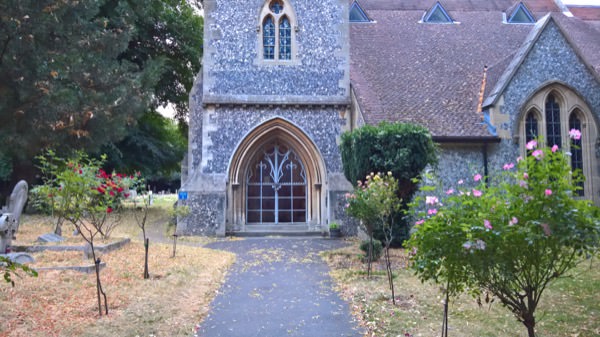
As usual, with both phones having OIS and the PureView tricks, what you're seeing on the page here and in subsequent photos is a lot brighter than the scene was to my eyes. Remember this - I was really pushing both phone cameras!
In case you want to grab the original images to do your own analysis, here they are, from the Lumia 950 XL and Pixel 2 XL, click the links to download. And to look at the images in more detail, here are fairly central 1:1 crops, again use your mouse or trackpad pointer to compare the images:
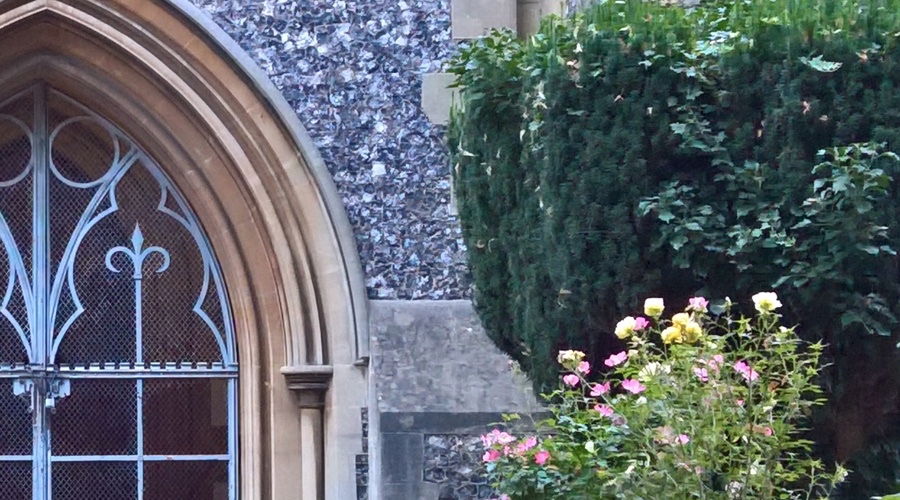
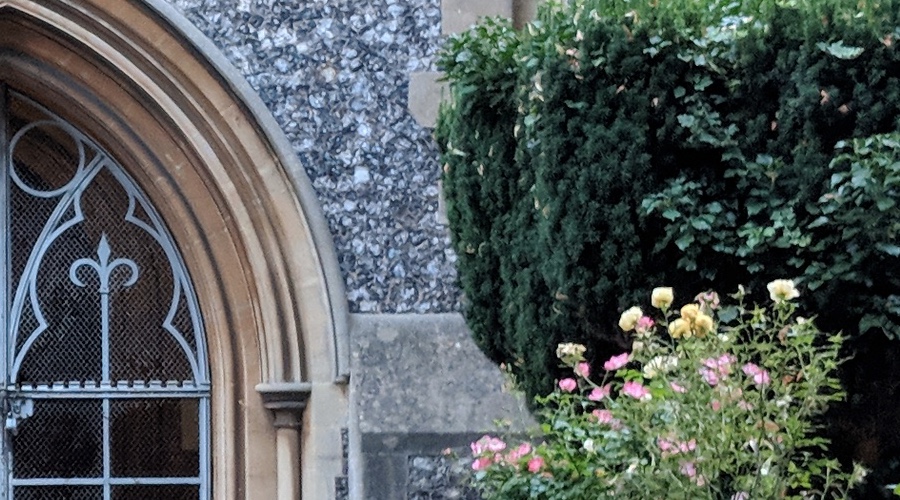
This one's too close to call, I think. The Lumia 950 XL image is marginally better/purer, but not enough to dock a point for the HDR+ software in the Pixel. Considering the low light, both photos are great. It's clear that I'll have to wait longer and for the light to get even weaker though!
Microsoft Lumia 950 XL: 10 pts; Pixel 2 XL and HDR+: 10 pts
Test 2: 20 minutes past sundown, Plane landscape
Quite dark now, with colours very muted to my eyes. Here is the scene, as shot by the Lumia 950 XL, again remembering that these OIS-equipped phone cameras make things look lighter than they actually were:
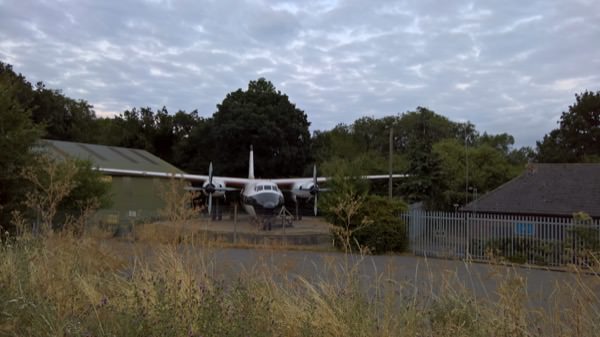
In case you want to grab the original images to do your own analysis, here they are, from the Lumia 950 XL and Pixel 2 XL, click the links to download. And to look at the images in more detail, here are fairly central 1:1 crops, again use your mouse or trackpad pointer to compare the images:

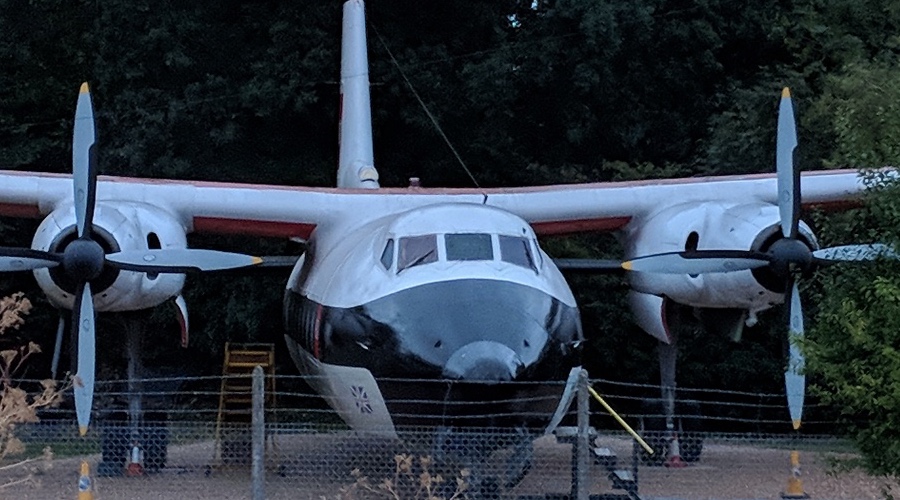
There's a clear difference coming in here now that light levels are really low. The Lumia 950 XL image is unbelievably pure and noise free, as if it was taken an hour before. Quite amazing. The HDR+ software in the Pixel 2 XL does well enough, and you could even argue that its noisier capture does include small items of detail (e.g. rivets on the fuselage) that are lost in the Lumia version.
You could argue that - but I'd still prefer the Lumia version of the scene by a point!
Microsoft Lumia 950 XL: 9 pts; Pixel 2 XL and HDR+: 8 pts
Test 3: 25 minutes past sundown, Car side view
My car in the gloom, again much darker than the Lumia suggests below. Thank goodness I washed it only last week, it's not too grubby!:
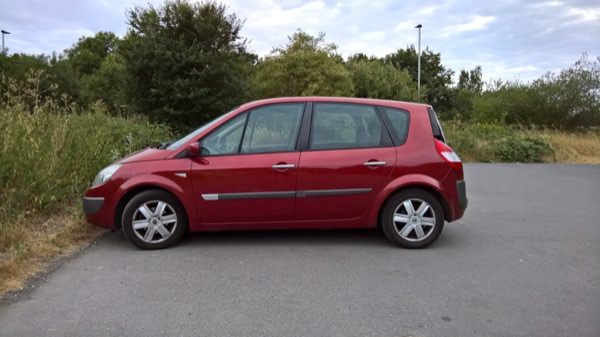
In case you want to grab the original images to do your own analysis, here they are, from the Lumia 950 XL and Pixel 2 XL, click the links to download. And to look at the images in more detail, here are fairly central 1:1 crops, again use your mouse or trackpad pointer to compare the images:
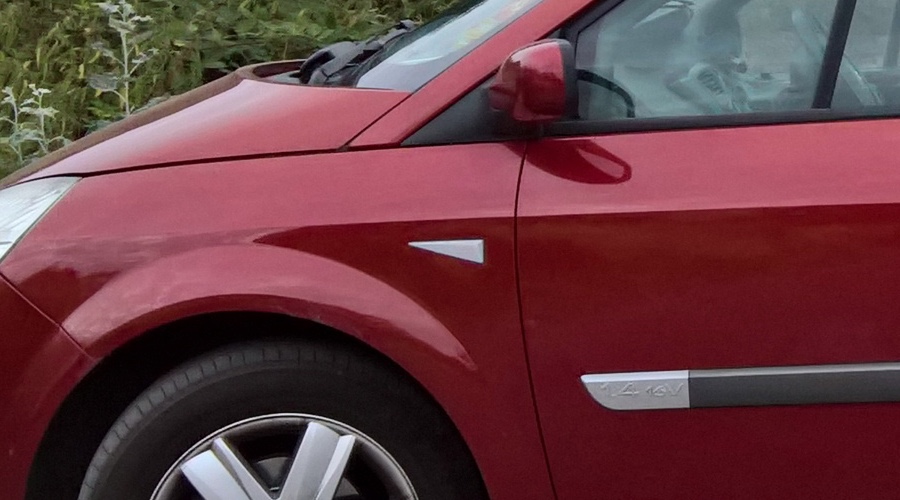
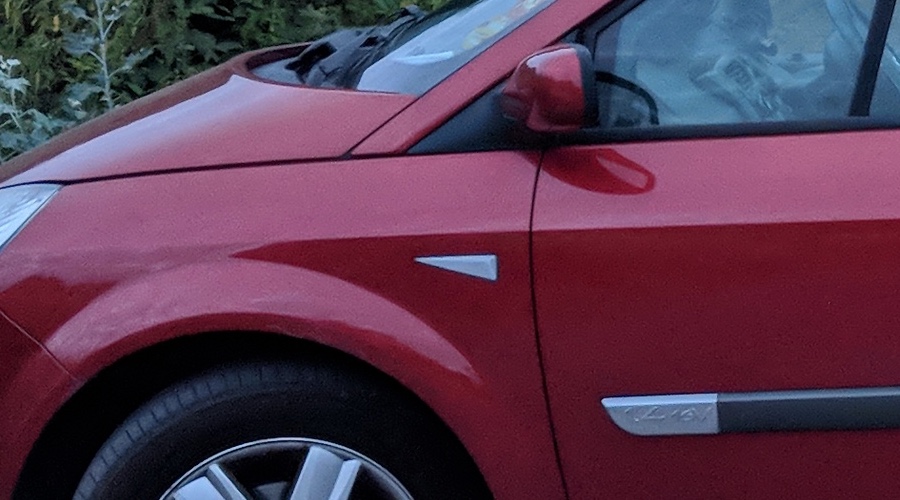
Quite amazing - the Pixel 2 XL photo is really good, considering how low the light was, yet the Lumia 950 XL manages to capture the car's colour with accuracy and utter purity, hardly an artefact or noisy pixel in the shot. Juha and his ex-Nokia team and Microsoft really knew what they were doing!
Microsoft Lumia 950 XL: 10 pts; Pixel 2 XL and HDR+: 8 pts
Test 4: Night time flash-less person
My daughter taking the shot, lit only by some gloomy artificial lights and with LED flash disabled on both phones, since I was interested in multi-frame combination here:

In case you want to grab the original images to do your own analysis, here they are, from the Lumia 950 XL and Pixel 2 XL, click the links to download. And to look at the images in more detail, here are fairly central 1:1 crops, again use your mouse or trackpad pointer to compare the images:


A very slight difference in shooting angle (hey, it wasn't me lining things up!), but you'll get the idea. Both photos/snaps are good, though the Pixel 2 XL nails focus and the smaller details better - hair, and so on, with the downside of looking very slightly processed.
The Lumia 950 range had just PDAF - Phase Detection Auto Focus, i.e. essentially the next step up from contrast-based auto-focus, and not terribly good in low light. Meaning that although the Lumia 950 XL is great at low light in general, when focussing is required to be accurate then it can struggle. The Pixel 2 XL uses 'laser auto focus', bouncing a light beam off a subject within a few metres in order to get a really precise focus lock.
Microsoft Lumia 950 XL: 8 pts; Pixel 2 XL and HDR+: 9 pts
Test 5: Dead of night, illuminated shop
Rather than shooting a totally dark street, here is some detail and some lighting, to add interest:
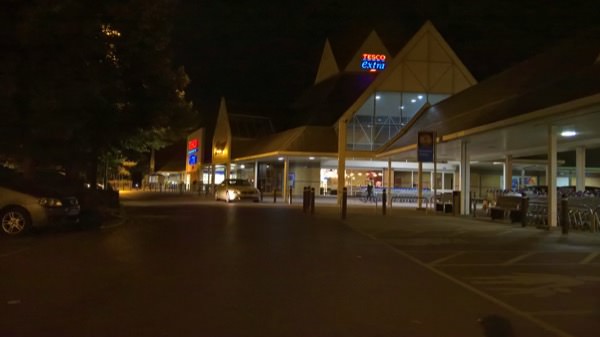
In case you want to grab the original images to do your own analysis, here they are, from the Lumia 950 XL and Pixel 2 XL, click the links to download. And to look at the images in more detail, here are fairly central 1:1 crops, again use your mouse or trackpad pointer to compare the images:
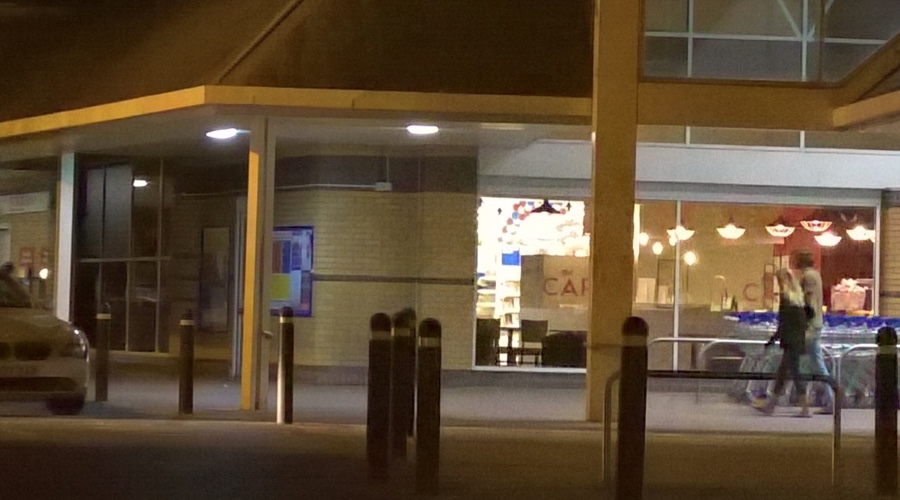
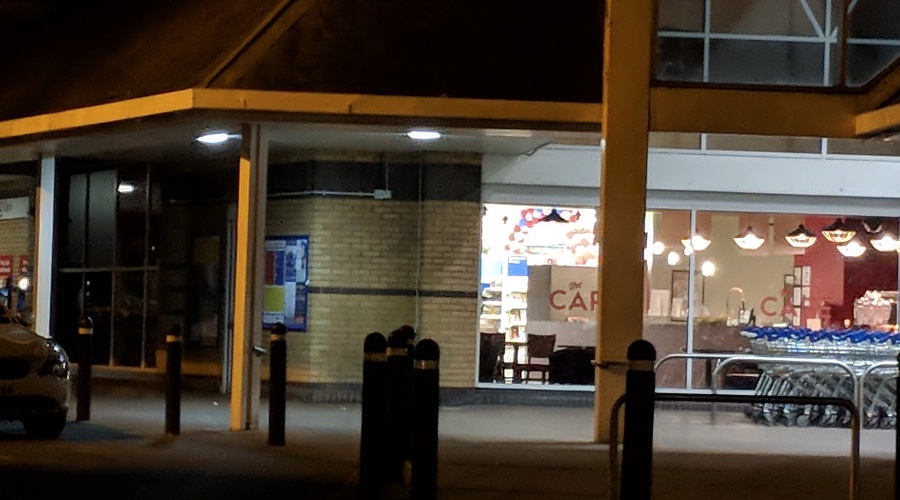
I'm going to give this one to the Pixel 2 XL and HDR+ - by a whisker. There's clearly more contrast and more detail being resolved, just look at the signs and bricks. Perhaps too much processing too much contrast, but we're right down in the weeds in terms of personal image processing preferences here.
Microsoft Lumia 950 XL: 8 pts; Pixel 2 XL and HDR+: 9 pts
Verdict
Consider this feature another PureView data point - the intermediate scores are:
- Lumia 950 XL: 45/50pts
- Pixel 2 XL with HDR+: 44/50pts
So a very slight win, though nothing significant overall. In fact, I use the word 'intermediate' because there was another test shot of interest, of some bluebells, which I'll include below as the full scene in a comparator:
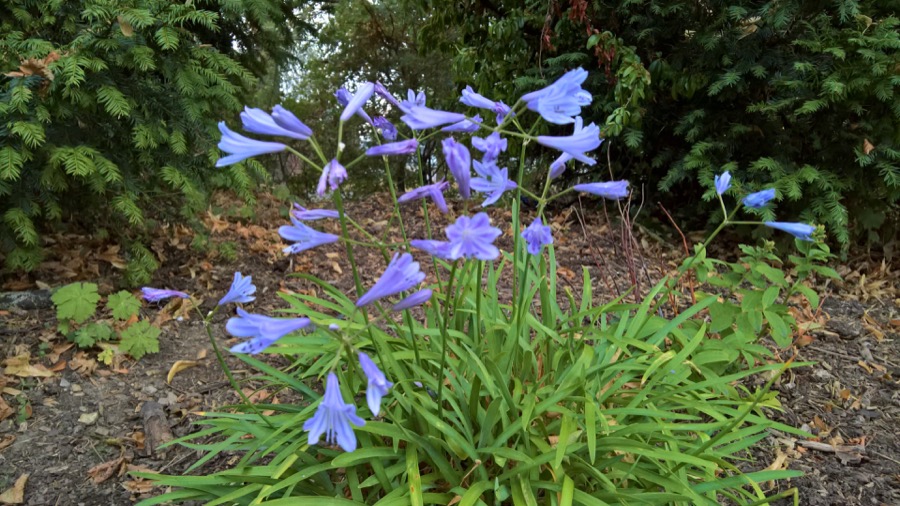
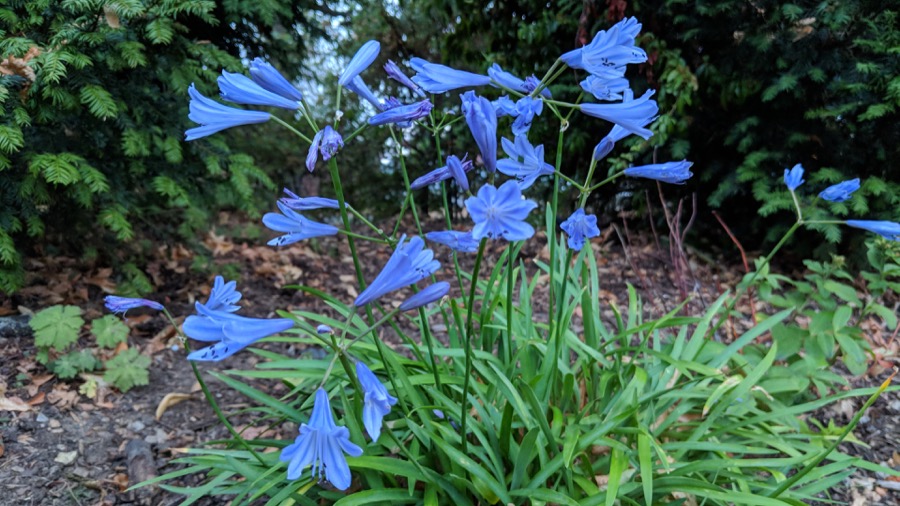
This one's interesting, since it was meant to be part of the main test, but I noticed after the fact that the Lumia 950 XL had failed to focus exactly on the flowers - more on the foliage in the background. It's a mistake it wouldn't make in daylight, but the PDAF used is simply too limiting for close up subjects in low light and this remains an Achilles heel of the older (2015) hardware.
In contrast, the Pixel 2 XL nails the focussing, though it doesn't get the colour right - anyone familiar with bluebells knows that the Lumia had the more accurate colours.
But the focussing misstep is far worse than a colour issue - the latter could be corrected later if needed, so the Pixel 2 XL and HDR+ get the win here by a couple of points.
Microsoft Lumia 950 XL: 6 pts; Pixel 2 XL and HDR+: 8 pts
Taking us to:
- Pixel 2 XL with HDR+: 52/60pts
- Lumia 950 XL: 51/60pts
And reversing the earlier narrow win. My conclusions here? There really isn't much in it, in terms of modern smartphone flagships and their camera hardware and software when compared to the Lumia champions of almost three years ago. Which says a lot for the Nokia and Microsoft hardware, though it also means that you won't lose too much when moving to another platform from Windows 10 Mobile if and when the time comes.
PS. It's not only the Pixel 2 XL and Google that use multi-frame (PureView take 2) combination algorithms now. OnePlus do this on their '6' and I'm pretty sure Huawei do this on several of their more powerful phones.
